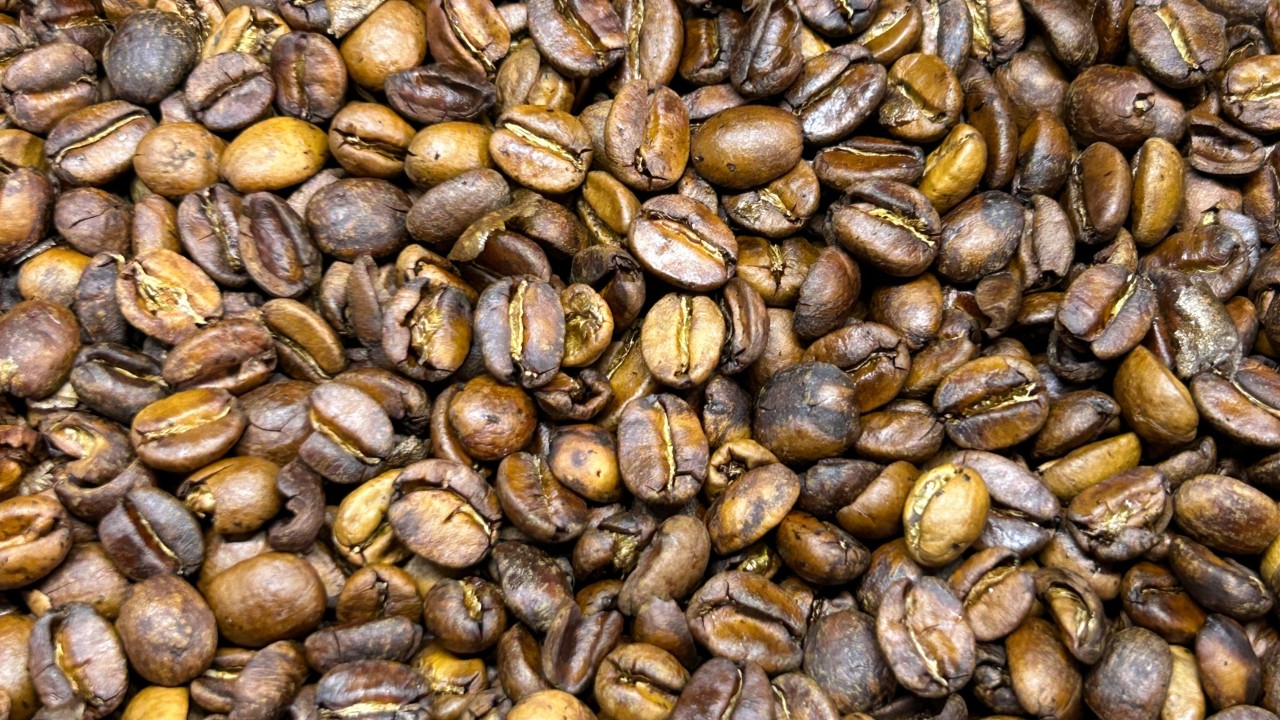
Liquid Gold or Hidden Risk? Reassessing the Safety of Coffee Oil
In a world increasingly attuned to sustainability and food innovation, coffee oil—pressed from the beans or salvaged from spent grounds—has begun to emerge from obscurity. Silky, aromatic, and rich in bioactive compounds, this golden-brown elixir captures not just the essence of roasted coffee, but a trove of functional potential. Yet behind its allure lies a chemical complexity that demands scrutiny.
Among its most intriguing ingredients are the diterpenes cafestol and kahweol —natural defence compounds in Coffea plants that have fascinated scientists for decades. These lipid-soluble molecules, once overlooked as mere flavour carriers, have become focal points of toxicological interest. With effects ranging from cholesterol modulation to potential chemoprotective properties, they defy easy classification. Are they friend or foe?
Our new review in Molecules MDPI presents a thorough re-evaluation of coffee oil's safety as a novel food under EU regulation. While coffee oil itself is not new to human exposure—it’s been in our cups for centuries—its isolated use in concentrated form, whether from green beans or industrial waste streams, raises legitimate questions. How much is too much? What happens when it is consumed outside the buffering context of brewed coffee?
Drawing on human clinical data spanning two decades, we synthesised the known effects of cafestol and kahweol on serum lipids, liver enzymes, and related biomarkers. Our conclusion? Moderate exposure through traditional coffee consumption—even unfiltered—poses minimal risk to healthy adults. However, the story changes with concentrated coffee oil supplements or food applications. In these cases, blood cholesterol and liver function parameters may shift significantly, especially among sensitive populations.
The estimated Lowest Observed Adverse Effect Level (LOAEL) was set at 40 mg/day of diterpenes, while the No Observed Adverse Effect Level (NOAEL) stood at 9 mg/day. From this, we derived a proposed Acceptable Daily Intake (ADI) of just 0.9 mg/day — the equivalent of roughly 225 mg of coffee oil, assuming a 0.4% diterpene content. These thresholds matter: they guide regulatory decisions, product formulation, and consumer safety.
Yet the picture is not solely cautionary. Diterpenes like cafestol have shown anti-inflammatory, hepatoprotective, and anti-carcinogenic effects in preclinical studies. They act as enzyme modulators, shield DNA from mutagens, and even support the body’s detoxification processes. This duality makes them emblematic of coffee itself—a substance that blurs the line between pleasure and pharmacology.
Importantly, the composition of coffee oil remains consistent across origin and processing methods, whether extracted from Arabica or Canephora, roasted beans or used grounds. This constancy simplifies both analytical validation and regulatory standardisation. And with the EU’s novel food approval framework requiring data on safety and exposure, our study helps close a long-standing data gap.
For coffee producers, innovators, and regulators alike, this is a call to action. Coffee oil is not just a by-product; it is a bioactive ingredient with functional and economic value. But unlocking its potential means balancing benefit with biological plausibility—grounded in science, not
-------------------------------------------------------------------------------------------------
Reference: Maier, B., Franke, H., Schwarz, S., & Lachenmeier, D. W. (2025).Toxicological Risk Assessment of Coffee Oil (Coffee Seed Oil and Spent Coffee Grounds Oil) as a Novel Food with Focus on Cafestol. Molecules, 30(14), 2951.https://doi.org/10.3390/molecules30142951
Among its most intriguing ingredients are the diterpenes cafestol and kahweol —natural defence compounds in Coffea plants that have fascinated scientists for decades. These lipid-soluble molecules, once overlooked as mere flavour carriers, have become focal points of toxicological interest. With effects ranging from cholesterol modulation to potential chemoprotective properties, they defy easy classification. Are they friend or foe?
Our new review in Molecules MDPI presents a thorough re-evaluation of coffee oil's safety as a novel food under EU regulation. While coffee oil itself is not new to human exposure—it’s been in our cups for centuries—its isolated use in concentrated form, whether from green beans or industrial waste streams, raises legitimate questions. How much is too much? What happens when it is consumed outside the buffering context of brewed coffee?
Drawing on human clinical data spanning two decades, we synthesised the known effects of cafestol and kahweol on serum lipids, liver enzymes, and related biomarkers. Our conclusion? Moderate exposure through traditional coffee consumption—even unfiltered—poses minimal risk to healthy adults. However, the story changes with concentrated coffee oil supplements or food applications. In these cases, blood cholesterol and liver function parameters may shift significantly, especially among sensitive populations.
The estimated Lowest Observed Adverse Effect Level (LOAEL) was set at 40 mg/day of diterpenes, while the No Observed Adverse Effect Level (NOAEL) stood at 9 mg/day. From this, we derived a proposed Acceptable Daily Intake (ADI) of just 0.9 mg/day — the equivalent of roughly 225 mg of coffee oil, assuming a 0.4% diterpene content. These thresholds matter: they guide regulatory decisions, product formulation, and consumer safety.
Yet the picture is not solely cautionary. Diterpenes like cafestol have shown anti-inflammatory, hepatoprotective, and anti-carcinogenic effects in preclinical studies. They act as enzyme modulators, shield DNA from mutagens, and even support the body’s detoxification processes. This duality makes them emblematic of coffee itself—a substance that blurs the line between pleasure and pharmacology.
Importantly, the composition of coffee oil remains consistent across origin and processing methods, whether extracted from Arabica or Canephora, roasted beans or used grounds. This constancy simplifies both analytical validation and regulatory standardisation. And with the EU’s novel food approval framework requiring data on safety and exposure, our study helps close a long-standing data gap.
For coffee producers, innovators, and regulators alike, this is a call to action. Coffee oil is not just a by-product; it is a bioactive ingredient with functional and economic value. But unlocking its potential means balancing benefit with biological plausibility—grounded in science, not
-------------------------------------------------------------------------------------------------
Reference: Maier, B., Franke, H., Schwarz, S., & Lachenmeier, D. W. (2025).Toxicological Risk Assessment of Coffee Oil (Coffee Seed Oil and Spent Coffee Grounds Oil) as a Novel Food with Focus on Cafestol. Molecules, 30(14), 2951.https://doi.org/10.3390/molecules30142951
